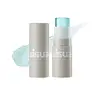What's inside
What's inside
 Key Ingredients
Key Ingredients

 Benefits
Benefits

 Concerns
Concerns

 Ingredients Side-by-side
Ingredients Side-by-side

Helianthus Annuus Seed Oil
EmollientVegetable Oil
Skin ConditioningAscorbic Acid 15%
AntioxidantPolyglyceryl-2 Triisostearate
EmulsifyingDiisostearyl Malate
EmollientCetyl Ethylhexanoate
EmollientCeresin
Emulsion StabilisingDipentaerythrityl Hexahydroxystearate/Hexastearate/Hexarosinate
Skin ConditioningHexyldecyl Ethylhexanoate
EmollientBeeswax
Emulsion StabilisingEuphorbia Cerifera Wax
Dipropylene Glycol
HumectantShorea Robusta Seed Butter
EmollientSucrose Tetrastearate Triacetate
EmollientParfum
MaskingCaprylyl Glycol
EmollientCopernicia Cerifera Wax
Hippophae Rhamnoides Oil
EmollientEthylhexylglycerin
Skin ConditioningGlycyrrhiza Uralensis Extract
EmollientTocopheryl Acetate
AntioxidantAdenosine
Skin ConditioningWater
Skin ConditioningButylene Glycol
HumectantHydrolyzed Collagen 0%
EmollientPanthenol
Skin Conditioning1,2-Hexanediol
Skin ConditioningAcetyl Hexapeptide-8
HumectantCopper Tripeptide-1
Skin ConditioningPalmitoyl Pentapeptide-4
Skin ConditioningOligopeptide-1
Skin ConditioningOligopeptide-2
Skin ConditioningHelianthus Annuus Seed Oil, Vegetable Oil, Ascorbic Acid 15%, Polyglyceryl-2 Triisostearate, Diisostearyl Malate, Cetyl Ethylhexanoate, Ceresin, Dipentaerythrityl Hexahydroxystearate/Hexastearate/Hexarosinate, Hexyldecyl Ethylhexanoate, Beeswax, Euphorbia Cerifera Wax, Dipropylene Glycol, Shorea Robusta Seed Butter, Sucrose Tetrastearate Triacetate, Parfum, Caprylyl Glycol, Copernicia Cerifera Wax, Hippophae Rhamnoides Oil, Ethylhexylglycerin, Glycyrrhiza Uralensis Extract, Tocopheryl Acetate, Adenosine, Water, Butylene Glycol, Hydrolyzed Collagen 0%, Panthenol, 1,2-Hexanediol, Acetyl Hexapeptide-8, Copper Tripeptide-1, Palmitoyl Pentapeptide-4, Oligopeptide-1, Oligopeptide-2
C12-15 Alkyl Benzoate
AntimicrobialOctyldodecanol
EmollientHydrogenated Polyisobutene
EmollientIsotridecyl Isononanoate
EmollientDibutyl Lauroyl Glutamide
Skin ConditioningDibutyl Ethylhexanoyl Glutamide
Skin ConditioningParfum
MaskingDiisostearyl Malate
EmollientLinalool
PerfumingBorago Officinalis Seed Oil
EmollientPhenoxyethanol
PreservativeSclerocarya Birrea Seed Oil
HumectantSilica Dimethyl Silylate
EmollientHelianthus Annuus Seed Oil
EmollientCalcium Titanium Borosilicate
AbrasiveLimonene
PerfumingTitanium Dioxide
Cosmetic ColorantCocos Nucifera Oil
MaskingCalendula Officinalis Flower
Skin ConditioningCI 42090
Cosmetic ColorantGeraniol
PerfumingCI 19140
Cosmetic ColorantTin Oxide
AbrasiveC12-15 Alkyl Benzoate, Octyldodecanol, Hydrogenated Polyisobutene, Isotridecyl Isononanoate, Dibutyl Lauroyl Glutamide, Dibutyl Ethylhexanoyl Glutamide, Parfum, Diisostearyl Malate, Linalool, Borago Officinalis Seed Oil, Phenoxyethanol, Sclerocarya Birrea Seed Oil, Silica Dimethyl Silylate, Helianthus Annuus Seed Oil, Calcium Titanium Borosilicate, Limonene, Titanium Dioxide, Cocos Nucifera Oil, Calendula Officinalis Flower, CI 42090, Geraniol, CI 19140, Tin Oxide
Ingredients Explained
These ingredients are found in both products.
Ingredients higher up in an ingredient list are typically present in a larger amount.
Diisostearyl Malate is an emollient and most often used in lip products. It comes from isostearyl alcohol, a fatty acid, and malic acid, an AHA.
As an emollient, Diisostearyl Malate helps create a thin film on your skin to trap moisture in. This helps keep your skin soft and smooth.
Helianthus Annuus Seed Oil is the oil derived from the seeds of a Sunflower. Sunflower seed oil is non-fragrant. It is an emollient, meaning it helps to soften the skin.
Sunflower seed oil contains many fatty acids. The fatty acids found in sunflower seeds include (from highest amount to least): linoleic acid, myristic acid, palmitic acid, stearic acid, arachidic acid, oleic acid, and linolenic acid.
These fatty acids help the skin create ceramides. Ceramides play a role in repairing the skin barrier.
Helianthus Annuus Seed Oil helps moisturize the skin. This in turn helps the skin look more rejuvenated and smoother.
Sunflowers are rich in vitamin E.
Historians believe Indigenous cultures of North America domesticated sunflowers before corn. Thus they relied on sunflower oil for a variety of uses. One such use is moisturizing skin and hair.
Sunflower seed oil may not be fungal acne safe. We recommend speaking with a professional if you have any concerns.
Learn more about Helianthus Annuus Seed OilParfum is a catch-all term for an ingredient or more that is used to give a scent to products.
Also called "fragrance", this ingredient can be a blend of hundreds of chemicals or plant oils. This means every product with "fragrance" or "parfum" in the ingredients list is a different mixture.
For instance, Habanolide is a proprietary trade name for a specific aroma chemical. When used as a fragrance ingredient in cosmetics, most aroma chemicals fall under the broad labeling category of “FRAGRANCE” or “PARFUM” according to EU and US regulations.
The term 'parfum' or 'fragrance' is not regulated in many countries. In many cases, it is up to the brand to define this term.
For instance, many brands choose to label themselves as "fragrance-free" because they are not using synthetic fragrances. However, their products may still contain ingredients such as essential oils that are considered a fragrance by INCI standards.
One example is Calendula flower extract. Calendula is an essential oil that still imparts a scent or 'fragrance'.
Depending on the blend, the ingredients in the mixture can cause allergies and sensitivities on the skin. Some ingredients that are known EU allergens include linalool and citronellol.
Parfum can also be used to mask or cover an unpleasant scent.
The bottom line is: not all fragrances/parfum/ingredients are created equally. If you are worried about fragrances, we recommend taking a closer look at an ingredient. And of course, we always recommend speaking with a professional.
Learn more about Parfum